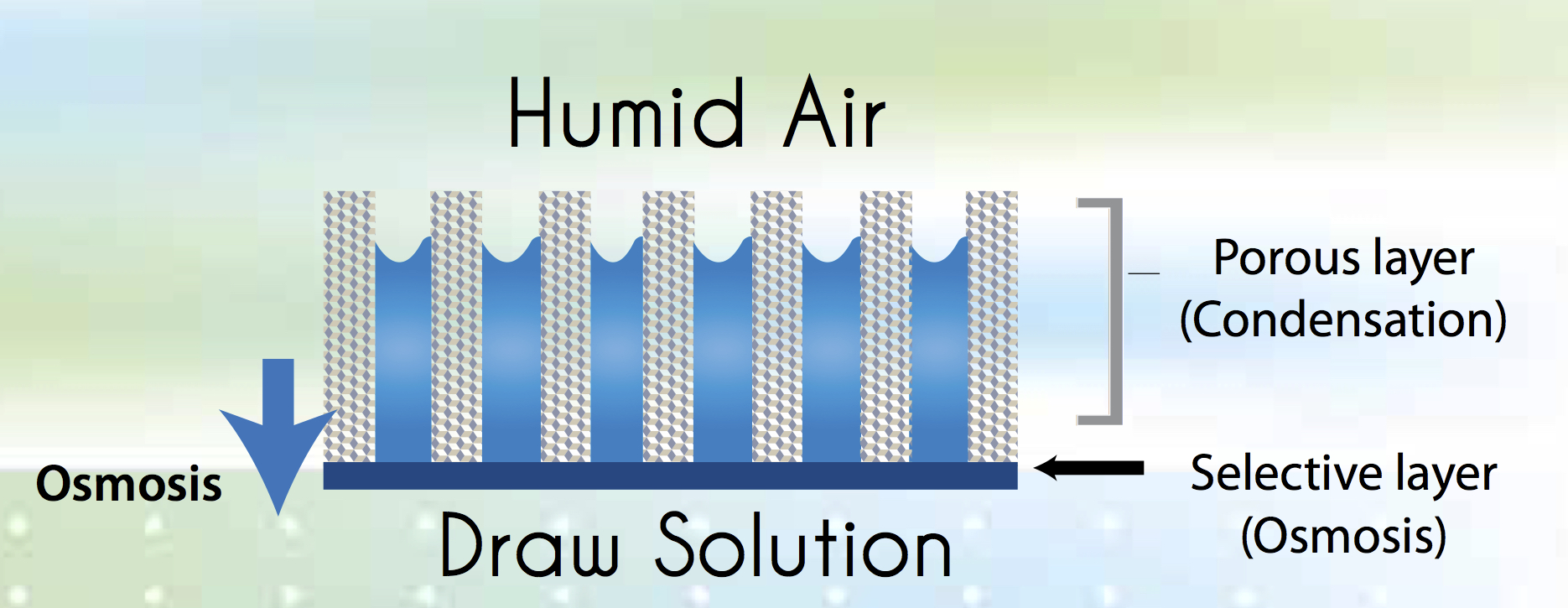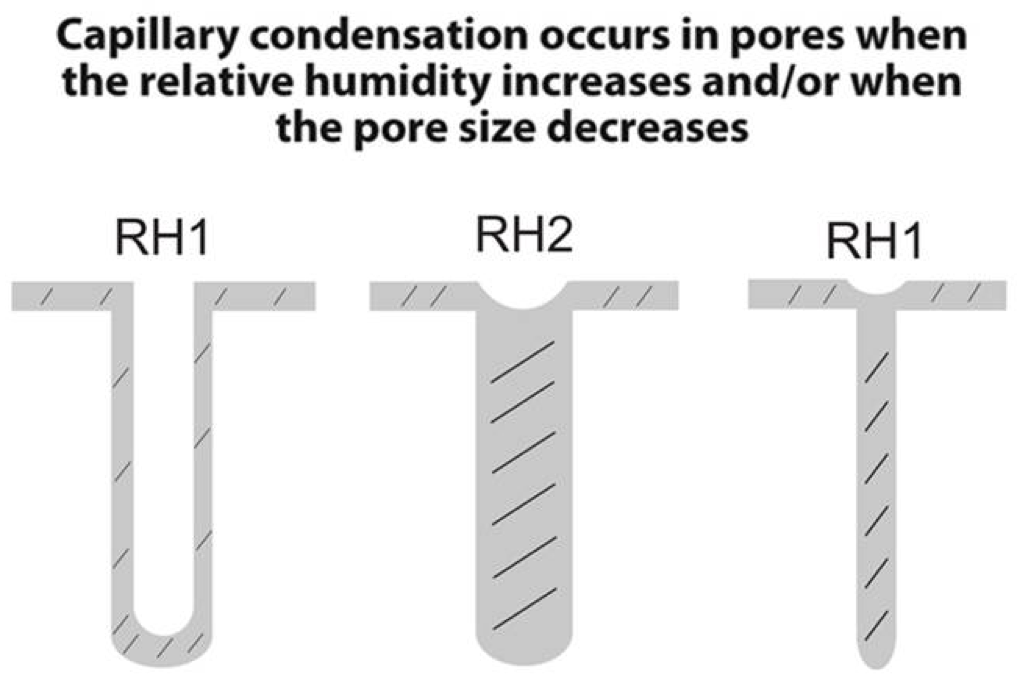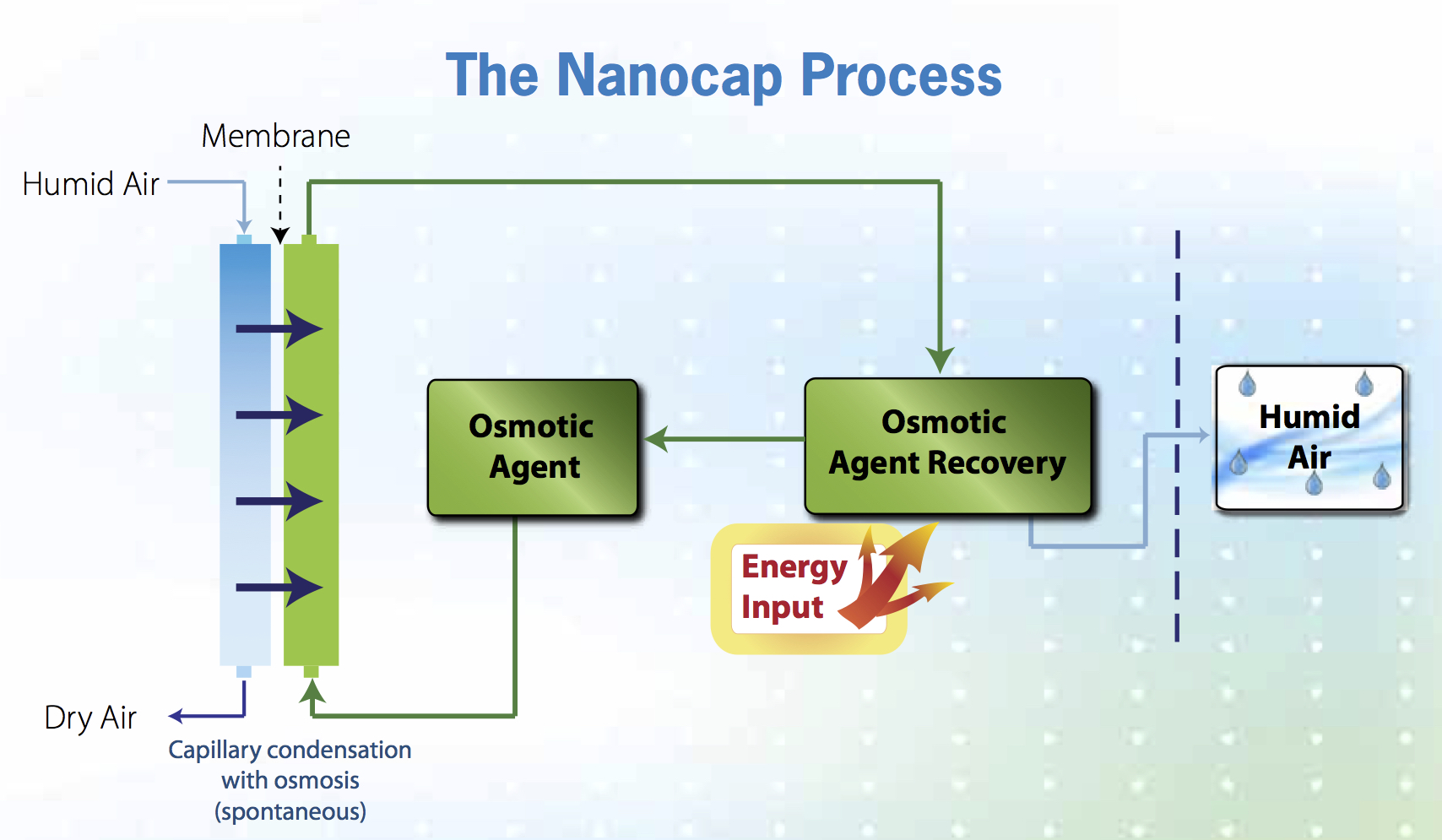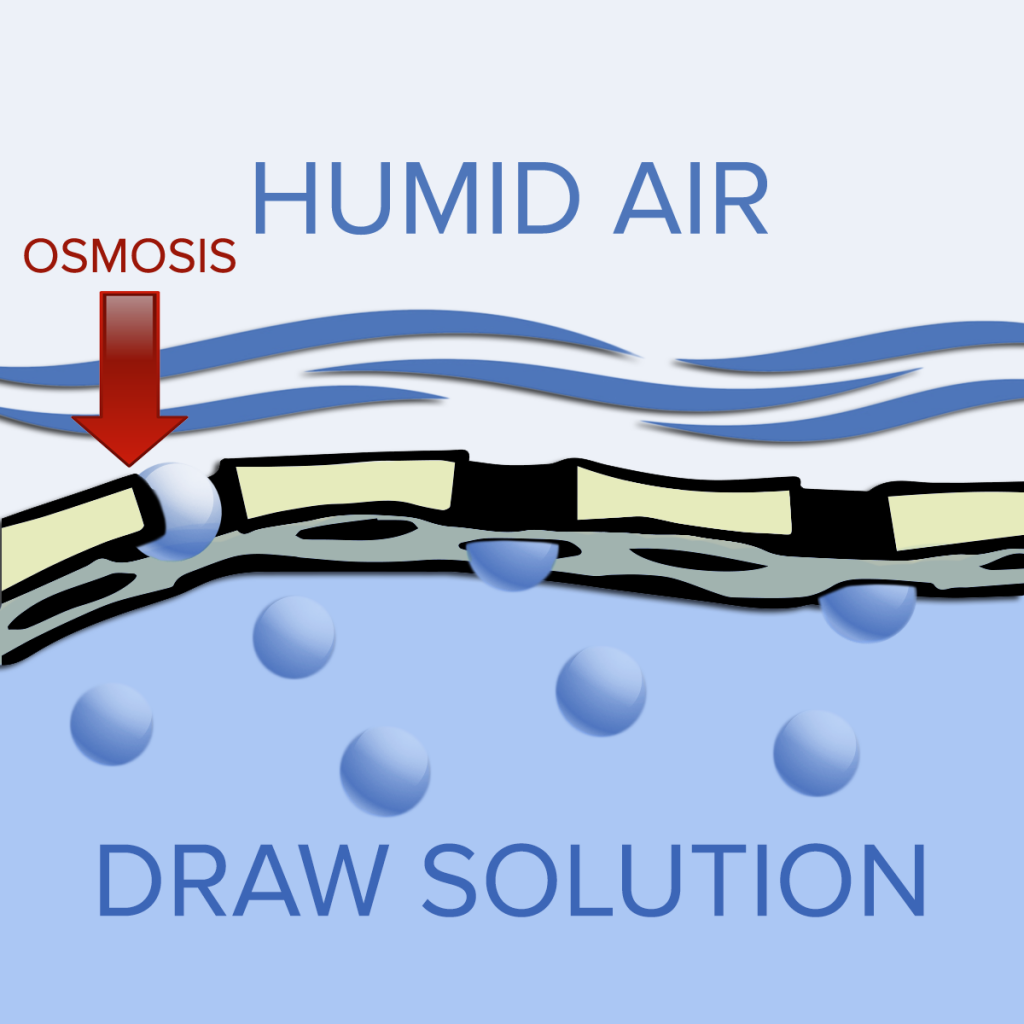- Forward osmosis is not dead – interview with leading water consultant Walid Khoury - August 30, 2020
- Listing of major commercial & academic FO players on ForwardOsmosisTech - April 12, 2020
- 0.26MGD FO-SWRO Hybrid for seawater desalination achieves 25% energy reduction compared to MF/SWRO - December 14, 2019
Osmotic dehumidification utilizes capillary condensation & forward osmosis as an alternative to traditional air drying methods
Traditional air drying methods are based on either vapor compression, desiccant substrate capture, or liquid desiccants but each of these technologies are associated with drawbacks ranging from muggy air when the interior has high water vapor levels (vapor compression), mold growth on evaporator coils (vapor compression), need for periodic inspection and maintenance (desiccant substrate capture) and low energy efficiency (vapor compression, liquid desiccants) and risk of contamination (liquid desiccants).
As an alternative to traditional methods, the intellectual property company Nanocap Technologies has developed and patented an innovative air drying process based on capillary condensation followed by osmotic diffusion through a semi-permeable forward osmosis membrane.

The two processes that drive the Nanocap system, capillary condensation and osmosis, are spontaneous and don’t require energy input. Energy required to regenerate the osmotic agent can be intermittent or continuous; the optimum time to regenerate occurs when waste heat is available. When paired with a traditional vapor compression air cooling system, reject heat from the compression process is well suited for this purpose.
Here’s how osmotic dehumidification works in more details

Kesten et. al. describe the osmotic dehumidification process in their article “The Potential of Osmotic Membrane Dehumidification”. According to the authors, the process starts when humid air is brought into contact with a semi-permeable forward osmosis membrane in an arrangement where the opposite side of the membrane is simultaneously in contact with an osmotic solution. Capillary condensation takes place within pores of a certain diameter and below. Neighboring liquid-filled pores can connect and form ‘liquid bridges’, which extend across the membrane thickness and provide paths for water transport. The authors continued to demonstrate that osmotic de-swelling (i.e. the osmotic driven diffusion of water from the pores into the draw solution) and not capillary condensation is the rate limiting step, which practically means that it is possible to increase dehumidification rates by increasing the osmotic pressure of the draw solution. Interestingly, the best results were observed for a cellulose acetate forward osmosis membrane where the active side (rejection layer) faced the humid air.
Supporting info: process diagram

Supporting info: process video
Final thoughts on commercial potential and technical challenges
According to a recent report by Grand View Research Inc., the global dehumidifier market was valued at $2.13 billion in 2014 and is forecast to reach $3.54 billion by 2022. A part of this growth will be driven by residential dehumidifiers as consumers become increasingly aware of adverse health effects from living in overly humid environments.
Since a typical residential dehumidifier operates at 10l-30l moisture removal per day, a residential dehumidifier based on osmotic dehumidification is expected to require less than 5 m2 forward osmosis membrane.
More significantly, osmotic dehumidification has the potential to disrupt the air conditioning market by changing the vapor compression requirements to eliminate the need for cooling to the dew point. According to a recent report by Markets and Markets “the air conditioning market is projected to grow at a CAGR of 6.69% from 2015 to 2020 to reach USD 24.28 Billion by 2020”.
The combination of large market potential, relatively small membrane area requirements for residential applications, and no need for industrial piloting projects & long term operational data prior to commercialization should get interest from both FO start-ups and established players looking for new market opportunities.
Nevertheless, several crucial technical challenges must be overcome before osmotic dehumidifiers see widespread market adoption:
- Designing / identifying suitable FO membranes capable of sustaining long-term moisture removal rates of at least 0.5 liters per m2 per hour (estimate).
- Designing / identifying a suitable draw solution regeneration system based on waste heat, which minimizes internal concentration polarization (ICP) within the membrane pore structure.

